Mulch & Stone
A Comprehensive Guide to the Essential Elements of Mulch and Stone in Landscaping
Landscaping is an art, and the materials you use can make all the difference in both the functionality and visual appeal of your outdoor space. Two of the most fundamental elements in landscaping are mulch and stone. These natural materials serve a dual purpose: they enhance the aesthetic beauty of your garden and provide critical benefits for plant health and maintenance. Whether you’re planning to revamp an existing garden, create decorative pathways, or enhance soil health, understanding the vital roles that mulch and stone play will help you make the best choices for your landscape design.
At G&H Landscaping, we’ve spent decades working with these essential landscaping elements, helping homeowners and business owners create beautiful, functional outdoor spaces. In this guide, we’ll dive into the many benefits of mulch and stone, explore their various applications, and give you expert tips for using them in your landscaping projects.
What Is Mulch?
Mulch is a layer of material applied to the surface of the soil, typically around plants and trees. It serves several key purposes, from promoting healthy plant growth to improving the overall look of your garden. While it’s often associated with decorative use, mulch plays an essential role in garden health by protecting the soil and aiding in moisture retention.
Benefits of Mulch in Landscaping
Mulch is a landscaping powerhouse with several notable benefits, including:
- Moisture Retention: One of the most significant benefits of mulch is its ability to retain moisture. By covering the soil, mulch reduces evaporation, meaning your plants stay hydrated for longer periods, even in hot weather.
- Weed Control: A thick layer of mulch acts as a barrier, preventing weeds from sprouting and competing with your plants for nutrients and water. This helps maintain a healthy garden with minimal effort.
- Temperature Regulation: Mulch helps regulate the temperature of the soil, keeping it cool in the summer and warm in the winter. This insulation helps protect the roots of your plants from extreme weather conditions.
- Aesthetic Appeal: Whether you choose wood chips, bark, or straw, mulch can enhance the visual appeal of your landscape by providing a clean, uniform look. It also complements other elements like plants, flowers, and hardscapes, creating a cohesive design.
- Soil Health: As organic mulch decomposes, it adds valuable nutrients back into the soil, improving its fertility. This is particularly important for vegetable gardens, flower beds, and any plants that require nutrient-rich soil.
- Erosion Prevention: Mulch helps prevent soil erosion by protecting the soil surface from the impact of rain and wind. This is especially beneficial for sloped areas or places prone to heavy rainfall.
What Is Stone in Landscaping?
Stone is another versatile material used in landscaping for both functional and decorative purposes. From creating paths and borders to adding texture and contrast to your garden design, stone plays a vital role in enhancing the look and structure of your outdoor space. Stones can range from large boulders to small pebbles, offering endless possibilities for creativity.
Benefits of Stone in Landscaping
Stone is a practical and durable choice for landscaping. Here’s why:
- Durability: Stone is incredibly durable and long-lasting, making it an excellent choice for areas with high foot traffic or harsh weather conditions. Unlike wood or mulch, stone doesn’t decompose, making it a low-maintenance option that stands the test of time.
- Low Maintenance: Once installed, stone requires very little upkeep. It doesn’t need to be replaced or replenished like mulch does, and it won’t fade or rot over time. Stone is highly resistant to pests and weather damage.
- Aesthetic Versatility: Stone can fit a variety of landscaping styles, from rustic and natural to sleek and modern. Whether you choose large boulders for a dramatic effect or small pebbles for a delicate border, stone adds texture and visual interest to your landscape.
- Functional Design: Beyond aesthetics, stone serves many practical purposes in landscaping. It can be used to create paths, patios, and retaining walls, or to fill in areas that are prone to erosion. Stone is also highly effective for drainage, making it a great choice for areas that experience heavy rain or need to direct water flow.
- Weed Control: When used as ground cover, stone helps prevent weeds from growing, much like mulch. A layer of gravel or pea gravel will stop weeds from taking root, helping to keep your garden looking clean and tidy.
- Improved Drainage: Stone improves water drainage in your landscape, especially when used in areas like pathways or driveways. Its permeability allows water to filter through the gaps between stones, reducing the risk of standing water and erosion.
Using Mulch and Stone Together
While both mulch and stone can stand alone as landscaping elements, they are even more effective when combined in creative ways. Here are some ideas for using both in your landscaping project:
Creating Pathways and Borders
Stone is an ideal material for creating pathways and borders, and mulch can complement these features by filling in the surrounding areas. For example, you can create a stone walkway leading to a garden bed, then use mulch to fill the edges and provide a clean, polished look. The combination of durable stone and natural mulch creates a functional yet beautiful outdoor space.
Adding Texture and Contrast
If your garden is made up primarily of plants and flowers, stone can add a contrasting texture that enhances the overall design. Consider adding a few large rocks or pebbles around your flower beds or using mulch to complement the stone’s texture. This combination of materials creates depth and visual interest, making your landscape more dynamic.
Improving Soil Health
If you’re using mulch around plants and trees, adding a layer of stone at the base can help with drainage and prevent soil erosion. The stone helps direct water away from sensitive root areas, while the mulch retains moisture and nourishes the soil.
Why Choose G&H Landscaping for Mulch and Stone?
At G&H Landscaping, we understand the importance of using high-quality materials that not only look great but also serve a functional purpose. With over 40 years of experience in the landscaping industry, we specialize in selecting the best mulch and stone for your specific needs. Whether you’re creating a new garden, updating your existing landscape, or installing pathways and decorative features, we offer expert advice and professional installation to ensure your outdoor space thrives.
Our team will guide you in selecting the perfect mulch and stone options that suit your style, needs.
Importance of Mulch and Stone
Using mulch and stone in landscaping projects can add texture and color, regulate soil temperature, retain moisture, and reduce the growth of weeds. They have the added advantage of minimizing erosion and providing long-lasting solutions to areas of your garden that are difficult to maintain.
Types of Mulch
Mulch is a protective layer spread on top of the soil, it comes in various materials, each with its own set of advantages.
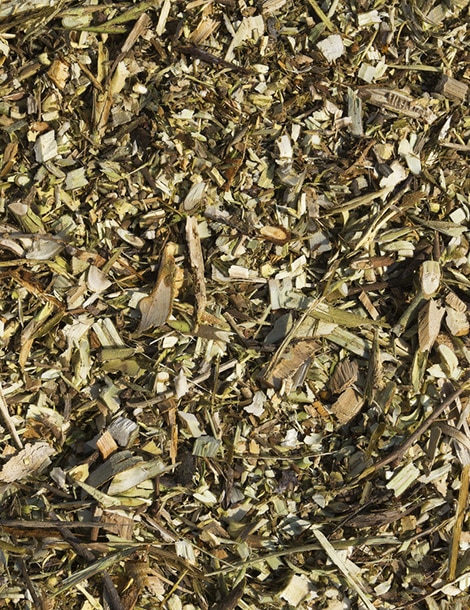
Organic Mulch
This type includes shredded bark, straw, grass clippings, and compost, which improve soil fertility as they decompose. Organic mulch is perfect for perennials, annuals, and vegetable gardens.
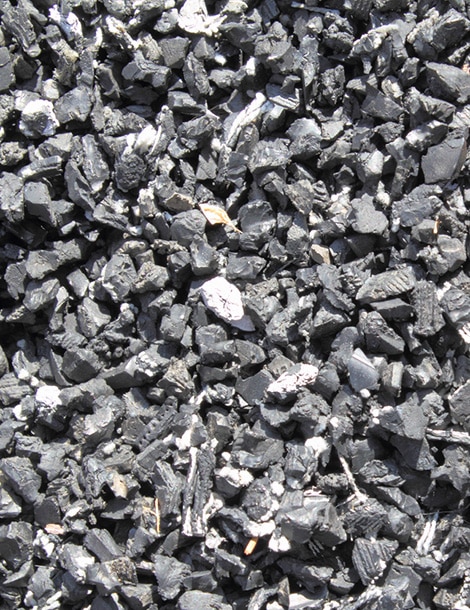
Inorganic Mulch
Made from materials such as black plastic, landscape fabric, and rubber, inorganic mulch is a durable option and works well in areas where long-term solutions are needed.
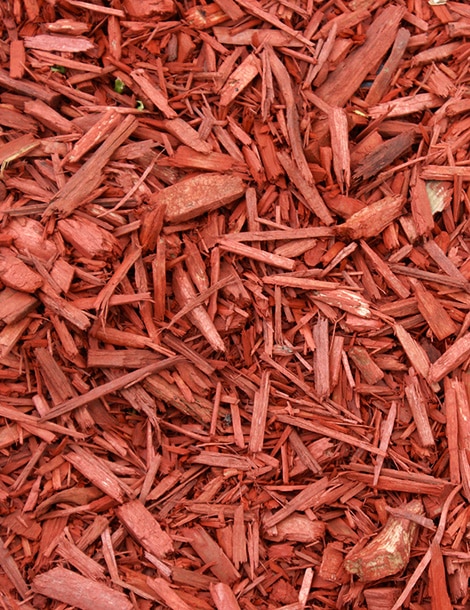
Color-Enhanced Mulch
For those looking for an aesthetic boost, color-enhanced mulch comes in red, brown, black, and other shades to match your landscaping design.
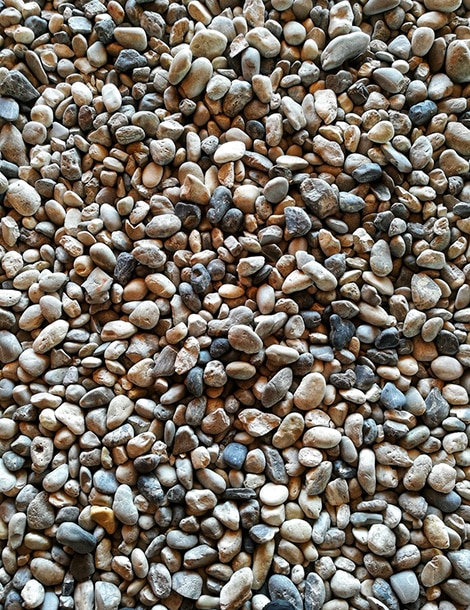
Pea Gravel
Small, rounded stones that are comfortable to walk on; pea gravel is great for pathways and patios.
Varieties of Stone
Stone in landscaping is used not only for its aesthetic appeal but also for its functionality, aiding in drainage, footpaths, and accents.
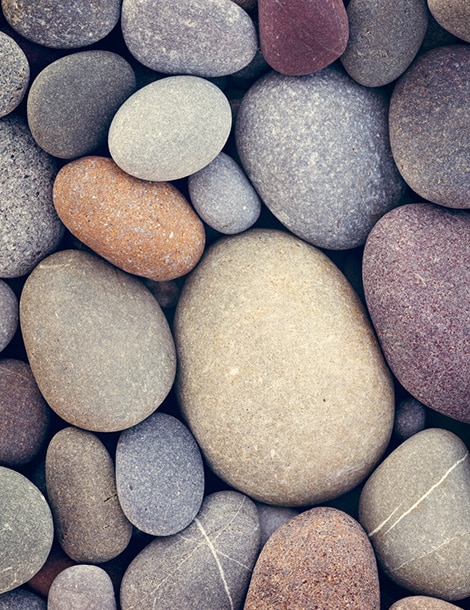
River Rock
These are larger and more polished than pea gravel, with varied colors that make them perfect for decorative purposes and drainage.
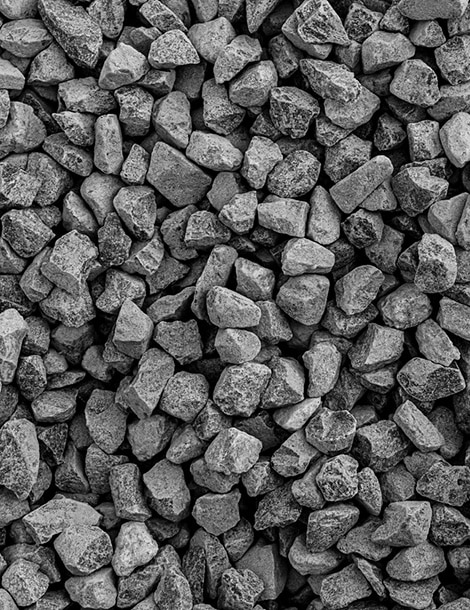
Crushed Stone
With sharper edges, crushed stone is ideal for driveways and areas requiring solid footing.
Choosing the Right Mulch or Stone
The choice of mulch and stone depends on your specific landscaping needs and aesthetic preferences. Consider the area’s exposure to sunlight, type of plants, drainage requirements, and the overall landscape design. In addition, keep in mind the maintenance needs and longevity you desire. Our staff can assist in selecting the perfect product for your project.
Maintenance Tips
To ensure the continued performance of mulch and stone in your landscape, maintenance is key. Regularly check for signs of wear or thinning and replenish as necessary. Proper installation and occasional cleaning will preserve the appearance and functionality of your chosen materials.
In need of expert advice? Our team at G&H Landscaping is ready to help guide you through your next project with premium mulch and stone options tailored just for you. Contact us for more detailed information.
